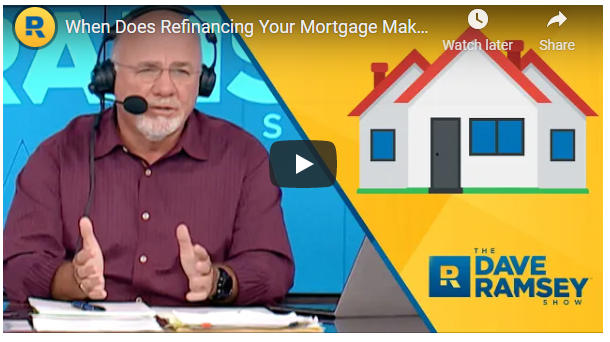If you notice interest rates going down and have given some consideration to refinancing your home mortgage, you are not alone. When mortgage rates decline, more people opt to take a second look at their existing mortgages in hopes of saving thousands of dollars in the years ahead. However, before you jump in and move forward with refinancing, you should keep these important factors in mind when making your decision.
Paying New Lending Costs
When you refinance your mortgage, remember that you will be expected to pay new lending costs. In some cases, you may be expected to pay these separately, while in other cases the new costs will be rolled into your new mortgage. These new costs can include such things as application fees, appraisal fees, inspection fees, and title search fees, so take this into consideration when figuring up your total costs. Remember that these days with lower interest rates, you could possibly take a 15-year (or even 10-year) mortgage rather than a 30-year mortgage. Generally, because of all the fees involved, it only pays to refinance if you can cut at least 1 percentage point off your mortgage rate (or if you can drastically reduce the term of the loan). However, most mortgages these days allow you to make prepayments on principal thus shortening the term of the loan. You can also consider making a “half-payment” every two weeks. This allows you to make the equivalent of 13 monthly payments a year with the 13th going toward principal. This will drastically shorten the term of your loan and if you are paid every two weeks you probably won’t even notice the extra payment. See: How Pro Homeowners Pay off Their Mortgage Faster Than Their Neighbors for more info on Bi-weekly mortgages.
The Reason for Refinancing
There are many reasons for wanting to refinance. The first as we mentioned is to lower either your monthly expenses or pay off your mortgage faster. But in addition to these purely financial reasons, you may choose to refinance because you want to make home improvements such as additions to a home, new roof, or other projects. Should you have something that needs to be done for your home, the extra costs associated with refinancing may be worth it in the long run. You certainly don’t want to simply borrow because the money is available and then go on a gambling or shopping spree but to do necessary repairs or improvements that will increase the value of your home is certainly a worthwhile goal.
Restarting Your Mortgage Timeline
If you are within a few years of finally paying off your mortgage, you may want to seriously consider whether or not refinancing is your best option. Toward the end of a mortgage more and more of your payment goes toward principal so you are actually paying very little interest. Should you decide to refinance, you will be restarting the timeline on your mortgage, meaning you will probably pay more in interest. In this case, you should have a great deal of equity already in your home and you would probably qualify for a Home Equity Line of Credit (HELOC). These work much like a checking account with your house acting as the collateral. There is no set time for repayment (although the longer you take to repay the more interest you will pay). But since you can keep the money for a shorter term, you can end up paying much less in interest.
Goodbye to Private Mortgage Insurance
If you are tired of having to pay for private mortgage insurance, the good news is that refinancing may let you get rid of this extra expense. If your home has risen in value over the years, and/or you have made enough payments to principal, so that your new loan would be for no more than 80 percent of your home’s current value, you can say goodbye to PMI.
By taking these and other related factors into consideration, you may find yourself not only getting your home fixed up a bit, but also saving yourself thousands of dollars in unnecessary expenses.
You might also like:

